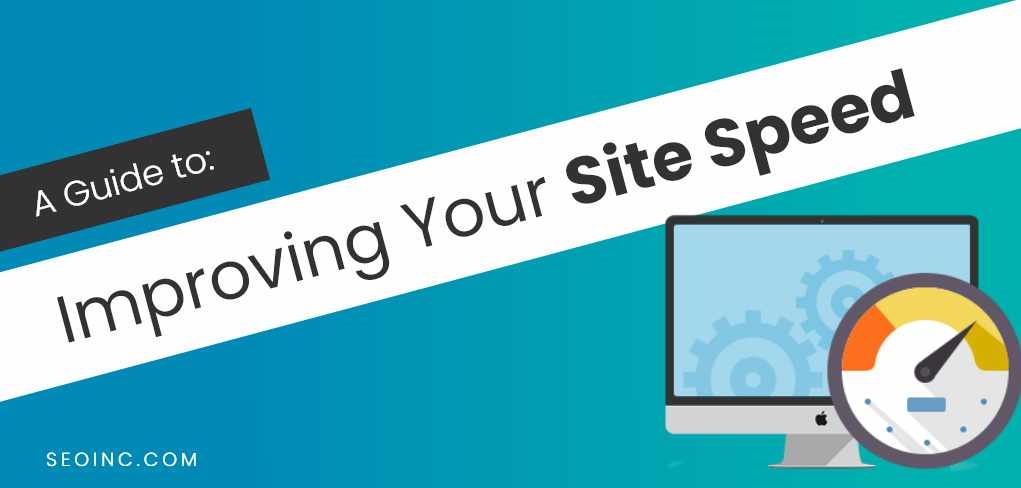
While there are many aspects to speeding up pages, here are four key things to look at to improve page load time. Web Site Speed is critical now in 2020 but will be mandatory in 2021 with the release and requirements for Core Web Vitals.
My SEO Company has always been on the cutting edge regarding strategies and can help you pass and qualify your site for compliance in preparation for Googles Core algorithm (Core Web Vitals) coming in 2021! Some of the elements of Web Vitas are latency, TTFB (Time to first byte), LCP, FID, CLS, first contextual paint, and overall load times.
Getting your site faster isn’t an easy task especially regarding Web Vitals. It can take a few weeks of testing over and over to find just the right balance for your site. In some cases, it can take months to overcome Site speed issues.
- Optimize Images: The most optimized format you can convert your images to in this day and age is Webp. Multiple WordPress plugins can do this for all your images, with some of the best ones being premium plugins that you have to pay for. One paid plugin to try on WordPress is Smush Pro. Smush Pro can go through all your files and compress them as well as compress new images. You can also use a free web tool at Compressor.io.
While there are other plugins and ways to compress your images without Webp, you won’t see the same compression ratio while keeping your images the same high quality. If you can’t use Webp, we recommend using JPGs for photos and PNGs for files where you don’t want to lose any quality when compressing them.
One of the easiest ways to optimize images is to resize them to the width they will be displayed on the page. If, for example, an image will be shown at 800px, don’t use a 2000px image file, resize it down to 800px. Fixing image size and compression can be done in Adobe Photoshop or other image editing programs such as GIMP, which is free.
- Minify HTML, CSS, JavaScript: Websites typically load a myriad of Javascript and CSS files that can bloat the web browser. To achieve faster speeds, there are WordPress plugins that can do the job of minifying your code for you. This results in faster load times because things like long variable and function names are reduced.
- Use a Content Delivery Network (CDN): CDNs are a great way to speed up your site. They store copies of files from your website on servers across the globe so that when a user requests a file or images. The image or data is delivered from the closest server to their location. Our choice is Cloudflare. Cloudflare gives you the best bang for the buck and also includes a WAF (web application firewall) to help mitigate bad bots and hacking attempts, especially the dreaded DDoS attacks. To get set up, you’ll need to change your DNS to use CloudFlare’s DNS, so have your domain registrar ready.
- Use Browser Caching: Browser caching can be a great tool, but sometimes it’s a double-edged sword. If configured correctly, the user can view pages on your site without having to re-download all the files. However, by allowing data to be cached on the user’s computer, sometimes an older version of a file can be served.
If you are using WordPress, you can easily enable caching using the plugin W3 Total Cache or WP Rocket (our choose). Just navigate to Page Cache under General Settings to enable it. If you are not using WordPress, you can enable caching in your .htaccess file if you are using Apache. Caching can speed up performance by up to 10x.
Why Does Site Speed Matter to SEO?
Not all ranking factors are aspects of your site that you can control. For example, you can’t control how many backlinks you have. It’s up to the owners of websites if they want to give you a link. However, page speed is a factor that you have complete control over.
It’s up to you if you want to compress images, use a CDN, cache files, and minify resources so that your site loads faster. Having a fast loading site benefits you in multiple ways. First off, people are less likely to bounce if your website comes up right away. If it takes too long to load, people will leave before they even see the content on your site.
And the worst part is Google and other search engines, actively measure your page’s bounce rate. So, if you can improve your load times, you’ll be doing a favor for your company not just in that more people will engage with your site, but that your search engine rankings will improve.
If you don’t think you can tackle all the aspects of a fast loading site on your own, don’t worry. We’re here to help. Test our website out to see how skilled we are at improving page speed. We have top ranks on all the testing tools out there. Contact us today to receive a free quote on how we can help you improve your site’s speed.
Page Speed is a Ranking Factor
Page speed is a significant factor for search engines such as Google. If your site takes too long to load, users will abandon your site and search engines look at that. Web site speed is the case for both mobile and desktop versions of your website. Both formats need to load quickly with an emphasis on mobile.
When too many people abandon your site, search engines will adjust your ranks accordingly. They look at it as users not being able to find what’s on your page regardless of if the information is there. If people leave before they can see the content because your site loads too slow, you know you need to fix those issues on your website.
How Poor Load Speed Affects Your Bottom Line
Users expect a website to load in no longer than two seconds or less. If it takes three seconds, they tend to start abandoning the pages. Furthermore, when your site takes too long to load, shoppers say they won’t return to make a purchase later, and nearly half of shoppers say they would share that experience with a friend.
Research from Akamai reveals that a two-second delay in page load time increases the bounce rate by more than 100%. A one-second delay in page speed could cost you 7% in sales.
How to Check Your Page Speed
Want to see how your website performs? Here are a few tools to help you.
- Page Speed Insights: This is Google’s tool with Lighthouse powering the back end data. They give you a score of how your site performs on mobile and desktop, along with a series of recommendations on what you can do to improve your site’s speed. There are three areas to pay attention to lab data, opportunities, and diagnostics.
The lab data shows information such as the first contentful paint and speed index. This is where statistics about your site are laid out. In opportunities, you’ll see areas where you can improve your page speed along with estimated time savings. An example of what you’ll see here is to avoid redirect chains. In diagnostics, you’ll see additional suggestions, such as reducing the impact of third party code.
- WebPageTest.org: (One of our favorites) In Webpagetest.org enter your website and choose a test server location (the closest to you), and a device to load the page from. They are a bit outdated with their mobile devices. However, you can select a helpful browser, especially if you check your analytics to find out which browser users on your site use most often. You can also choose your connection speed if you want to see how long your site takes to load on mobile vs. desktop.
Choose 3G or 4G as well in connection speed under advanced settings to see how long your site will take to load on mobile. They will grade your site on multiple aspects that include time to first byte, image compression, caching static content, and use of CDNs. They run the test 3 times, so you are given an accurate representation of your load time.
- GT Metrix: This tool allows you to change location, browser, and other options only if you are logged in. They give you an overall score, along with total load time and page size. You are rated you on multiple actionable aspects as well, such as deferring parsing of Javascript and minifying code.
- Pingdom: With Pingdom, you can choose a location to test from as well. Pingdom scores your site on a scale of zero to 100. They also provide page size, load time, and requests. Pingdom list areas where you can improve your page performance, such as compressing content with gzip and using cookie-free domains. They also show a timeline of how long it takes to load each resource on your site.
With these four PageSpeed tools, you’ll have a better idea of how well you’re doing and what areas you can improve your page speed in. The slower your page loads, the more frustrated your users will be, and the less likely you will be able to achieve a high rank. Follow the advice presented by the tools and rerun the tests until you get a good grade.
Why Page Speed Matters for Local Search
With Google ranking local sites higher to showcase local businesses lately, what better time to work on page speed then when you are so close to being in the number one position for local results? You may think, why do I need to work on page speed when Google is already placing my site in a higher position for local searches? The answer is that you’d be missing out on an excellent opportunity for even more business.
Page speed is something you have full control of, so why not take advantage of your chance to stand out and get more revenue? With a fast site on both mobile and desktop, your users are more likely to make a purchase.
How to Increase Your Page Speed for Your Mobile Site
Increasing your mobile page speed is similar to increasing your desktop page speed, but there are several changes you can implement to ensure a fast load time:
Utilize HTTP/2. HTTP/2 is becoming the new standard, thanks to more efficient compression, prioritization, and loading of data. HTTP/2 loads data faster and more efficiently. With HTTP/2, everything is loaded at once. That’s crucial when you consider the short amount of patience people have when using a mobile. Note that HTTP/3 is on the way and will be released shortly. HTTP/3 will dramatically increase load times that will be faster than HTTP/2
Offer a different experience for mobile than your desktop site. Responsive design means more than merely having content on your website resized. Your site should offer a different experience for the mobile user. This may include a hamburger menu that expands when clicked on instead of taking up valuable space showing the whole menu. A site that is simply a scaled-down version of the desktop site doesn’t offer the user the type of experience that will have them stay on your website and possibly make a purchase.
Mobile users know what they’re looking for when they visit a site. And that does not include overwhelming ads and images that take up the whole screen. Get your content loading correctly for mobile users, and you will see an increase in engagement and ranks.
Other Recommendations for Improving Page Speed
- Minimize HTTP Requests: The fewer requests your site makes, the faster it will be. This is because there are several steps the HTTP protocol has to go through to initiate the transfer of the files.
The first step to reducing HTTP requests is to notice how many your page is making. You can find out using Chrome’s developer tools. Right-click on your page and press inspect, then click Network to see how many requests you’re making. You can lower the number of requests by combining files such as JavaScript and CSS.
- Load JavaScript and CSS asynchronously: Loading your files asynchronously means they will not be blocked when attempting to be loaded. Typically, JavaScript and CSS files are blocked and can only load one at a time. Loading them all at the same time will increase page speed dramatically. If you are using WordPress, try the plugin WP Rocket to have this done for you automatically by checking the setting,
- Defer loading of JavaScript: Loading JavaScript files before the rest of the page loads means the content cannot be displayed until the JavaScript files are run. If you place your JavaScript at the bottom of your page, you can avoid this. You can also use WP Rocket on WordPress to do this.
- Fast and Secure Web hosting: Where you host your web site is one of the most critical factors in how fast a page will load. If you are on a slow web host such as on a shared server with tons of accounts, a VPS server with not much CPU speed, or a slow dedicated server, it may be time to upgrade.
- Gzip compression: you may already be compressing images on your site, but are you compressing the code too? By enabling Gzip compression, you can compress the HTML, CSS, and JavaScript files for additional page speed enhancements.
Check your web server, or if you’re using WordPress, check your plugins to see if you have Gzip enabled. Either WP Rocket or W3 Total Cache both support Gzip in WordPress. If you’re not using WordPress, but you are using Apache, edit your .htaccess file to use Gzip. Most modern browsers support Gzip as well, which makes it an excellent choice to use.
- Use external hosting providers: By using an external hosting provider, you can cut down on bandwidth usage for large files and deliver them at fast speeds even during peak traffic times. Not only that, but it makes backups take up more space and could make restoring a backup more difficult.
A popular choice to host files is Amazon. You can also host video files on YouTube or Vimeo. One of the most significant advantages of YouTube is that once you get people viewing your video, it will start to show to the rest of YouTube’s audience, which will be like free advertising for your site. Vimeo is another option that has a video player that has a more minimalistic design and will be able to serve your videos even if they have significant demand.
- Streamline CSS: if you are repeating CSS styles on elements of your site, you may want to use a CSS file that will reduce redundancy. It’s best to group all your CSS into one file to reduce server load times.
- Lazy load content: By prioritizing the content that loads above the fold, which is what a user first sees when they go to your page, you can cut download times. Because it loads the content under the fold when a user scrolls down, you’ll be reducing the time it takes to load the page. One way to get content to lazy-load is the use of WP Rocket (if you are using WordPress). Simply open up the WP Rocket plugin page, and under the Basic tab, select lazy load images.
- Reduce your amount of plugins: if you are using WordPress, it’s easy to start using tons of plugins with all the features they enable you to customize your site with. However, there is one downside to that. Allowing too many plugins will cause a lot more code to be loaded on your website, which will increase server load and response times.
One way to determine which plugins should be activated or deactivated on your site is to selectively disable them one at a time and use a page speed test tool to see what improvements can be made by disabling each plugin one at a time. Check to see if any of your plugins overlap in functionality. That is another way to determine which plugins should be removed.
- Reduce redirects: long redirect chains can slow down the load time of your site. This is because the browser needs to make multiple requests to get to the page you are requesting finally.
- Upgrade WordPress: if you are using WordPress, you’ll want to keep it updated to the latest version. Doing so could not only offer performance enhancements but also fixes bugs and security issues.
- Optimize background processes: if you are using WordPress and you have backups scheduled, these processes are very resource-intensive. They can dramatically slow down your site, especially if your site takes up many GBs. To reduce the impact of this, schedule backups to non-peak times when your server has a lower load.
- Optimize blog posts to show excerpts: In WordPress, the default for your blog page is to show the full articles. Going into settings and reading, you can change it only to show a summary. This will lower the page size and increase the page speed, plus it will garner more views to different pages of your blog, which can mean more money if you are showing ads.
- Break comments into pages: have you ever been to a site that loaded hundreds of comments on one page? That is a poor choice because most people don’t read all the comments, and it takes time to load them as well as could slow a browser down. By going into settings and discussion, you can enable breaking the comments into multiple pages in WordPress. This will make the page load faster as well as not overwhelm the user.
- Choose a theme optimized for speed: some themes in WordPress are bloated with fancy designs, CSS, and JavaScript. By choosing the right theme for your site, it can have a substantial impact on how fast your site is loaded.
- Install faster plugins: by replacing slow loading plugins on your site, you can speed up the performance with WordPress. Some plugins are bloated with features and unnecessary code. We recommend searching for plugins that offer the same features but are more compact and better written.
- Split long blog posts into multiple pages: long-form posts tend to rank high in search engines. However, they may be slowing your site down. WordPress offers an easy fix for this. Simply add to where you want to split up the article, and it will split it into multiple pages.
- Optimize the database: has your site been around for a while? It may have unnecessary things, such as trashed posts and unused tags. Fortunately, there’s a plugin that can clean up things like that. Just install WP Sweep to optimize your database with one click.
- Limit post revisions: multiple revisions of posts can weigh your database down. If you want only to include the latest four changes for each post, simply add this to wp-config.php: define( ‘WP_POST_REVISIONS’, 4 ); Now you’ll be discarding revisions if there are more than 4.
- Block hotlinking: if you have a highly trafficked website, there is a chance people will start stealing content from it, and they might be loading it directly from your servers. To prevent this, if you are using Apache, you can edit your .htaccess file only to allow your referrer.
- Use a DNS level firewall: we already mentioned using Cloudflare as a CDN, but they can also act as a firewall if you configure your DNS to use them. This can block brute force attempts at hacking your site, which would also otherwise weigh the server down.
- Upgrade PHP: in addition to upgrading WordPress, upgrading PHP could also offer additional performance enhancements. The newest version of PHP is optimized to run faster and perform better. Although you may be used to using your current version of PHP and it may be difficult to upgrade, doing so will benefit your site.
Digital & Social Articles on Business 2 Community
(49)
Report Post





